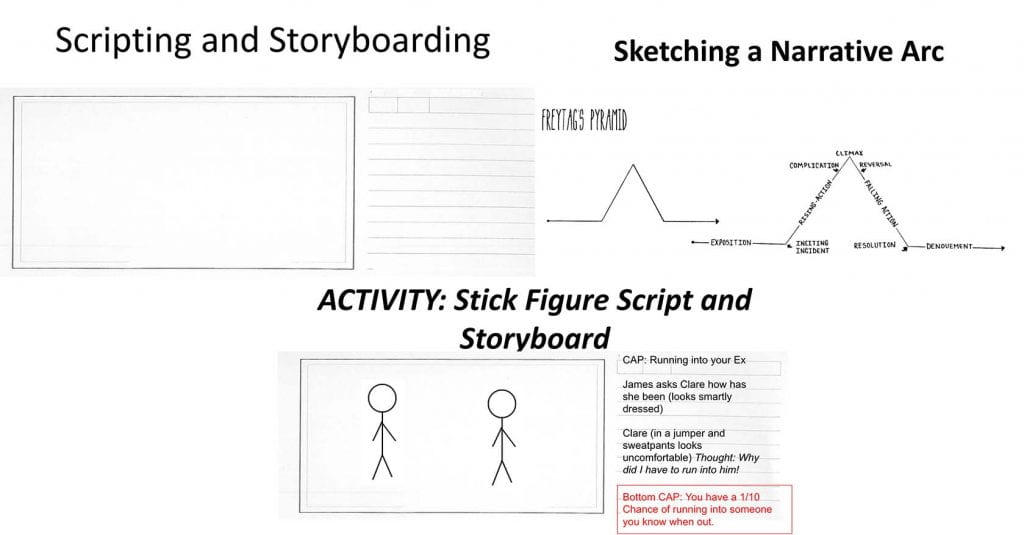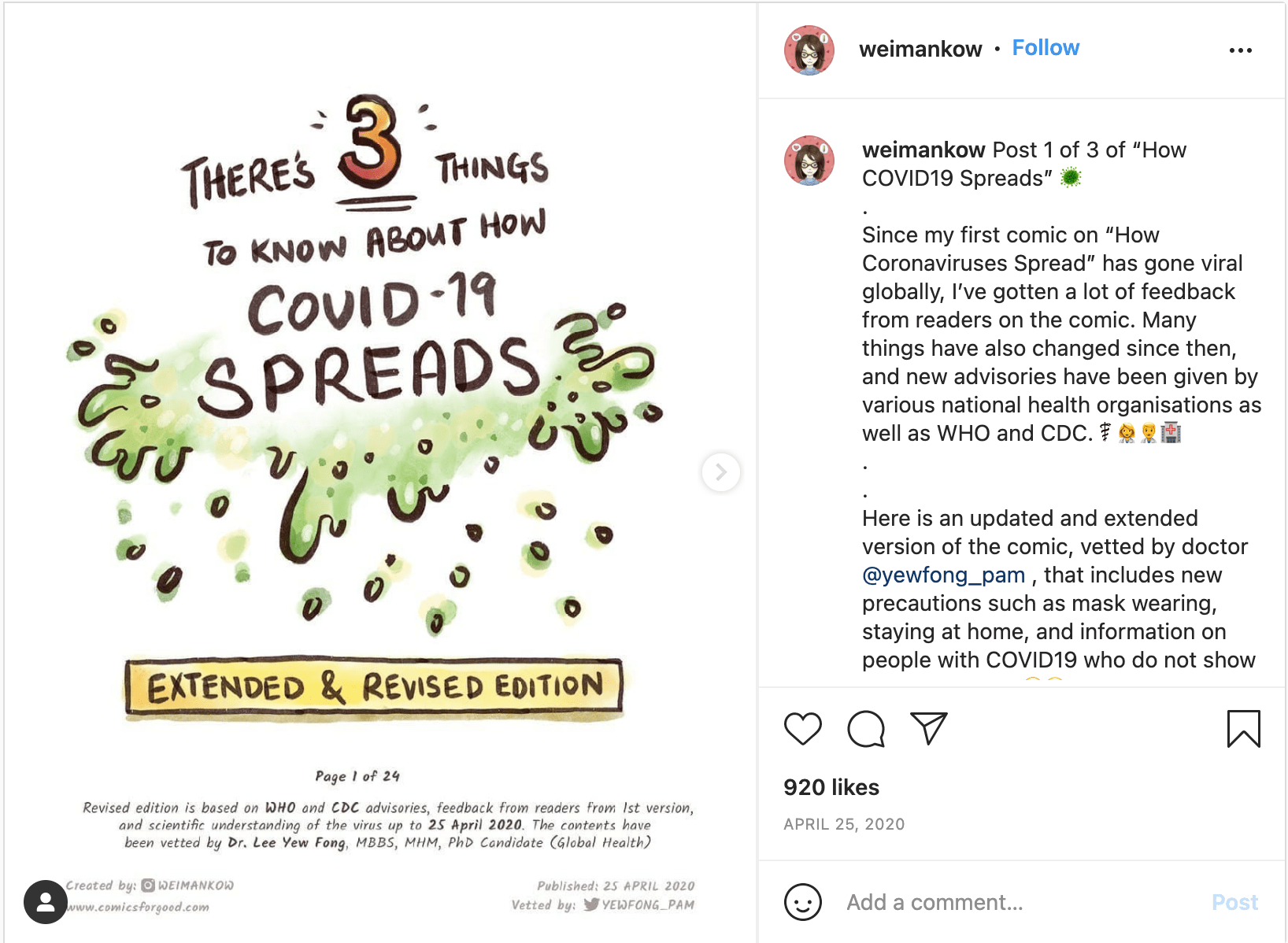During the course of COVID-19 keeping up-to-date on public health information has become an essential part of daily life, as information about the status of the pandemic is constantly changing. With the influx of health information came the prevalence of the use of infographics, which convey factual information through an easily accessible and digestible format using visuals and text (Chan, A. K. M. et al. 2022), on social media sites like Instagram and Twitter.
“Data comics” take the elements of the infographic a step further and seek to emphasize emotions and empathy as well as convey factual information.

During the “COVID, Comics and Me” workshop we were introduced to the world of comics and how information, specifically health data, and stories about COVID-19, can be effectively portrayed through the medium of data comics.
Key elements of this workshop included learning about how comics are used cross-culturally, how to storyboard and script comics, and elements that convey a coherent message through a comic such as characters, and a narrative arc. Through the use of these methods, we were able to create our own comics about lived experiences during the COVID-19 pandemic.

The use of comics to communicate public health messages comes with benefits such as comics serving as a platform that prioritizes mental health, aid in fostering health literacy, address issues of health inequity, and increase audience engagement with the use of visual narratives and color.
One example from work by the artist ‘pristinethinpen’ exemplified how comics make use of ‘visual metaphors’ and appeal to the emotions of readers.

Another example from the artist _coronadiary on Instagram expresses how prioritizing mental health during COVID is felt by many others who can see their lived experiences reflected in a comic.

Comics also combat “statistical chaos” (Alberda, Feigenbaum 2020) and “information disorder” (First Draft 2019) by including cited information embedded in the graphics and including links to references and sources that are trusted and credible.
The comic by artist weimankow includes credible sources through a link at the bottom of their work.
In order to better comprehend how information can be conveyed through our own experiences, we were tasked with creating our own comics that reflect a lived experience during COVID. I used the characters Ryan and APeach from the popular Korean character emoji series “KAKAO Friends.” I found that using characters that I was already familiar with aided in my creative workflow and made it easier for me to connect with my comic.
Through the use of mostly pictures and little wording, I portrayed my experience of learning that a concert that I had been looking forward to was canceled due to the COVID-19 outbreak.


I expanded on this by incorporating information from McCloskey et al. 2020 about the uncertainty of how mass gatherings like concerts will continue during and after COVID-19. Rather than including speech, communication, or thought bubbles, I decided to include this information below the comic because that is where I felt users would generally engage with text concerning this particular topic.
The finished comic is posted below.

Comic Final Draft
References
Chan, A. K. M., Nickson, C. P., Rudolph, J., W., Lee, A., and Joynt, M., G., (2020) “Social media for rapid knowledge dissemination: early experience from the COVID-19 pandemic,” Anaesthesia [online]. 75(12), pp. 1579–1582.
Bach, B., Wang, Z., Farinella, M., Murray-Rust, D., and Henry Riche, N., 2018. Design Patterns for Data Comics. In: Proceedings of the 2018 CHI Conference on Human Factors in Computing Systems – CHI ’18 ACM Press.[online], (38), 1-12
First Draft (2019) FIRST DRAFT’S ESSENTIAL GUIDE TO October 2019 Understanding Information Disorder. FIRST DRAFT. Available at: https://firstdraftnews.org/wp-content/uploads/2019/10/Information_Disorder_Digital_AW.pdf?x76701. [Accessed Dec 9, 2021]
McCloskey, B., Zumla, A., Ippolito, G., Blumberg, L., Arbon, P., Cicero, A., Endericks, T., Lim, P., L., and Borodina, M., (2020) Mass gathering events and reducing further global spread of COVID-19: a political and public health dilemma Lancet [online], 395(10230), 1096–1099.
Tasić, M. and Stamenković, D., 2015. The interplay of words and images in expressing multimodal metaphors in comics. Procedia, social and behavioral sciences [online], (212), 117–122.

